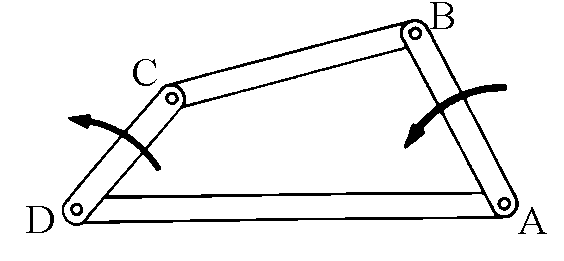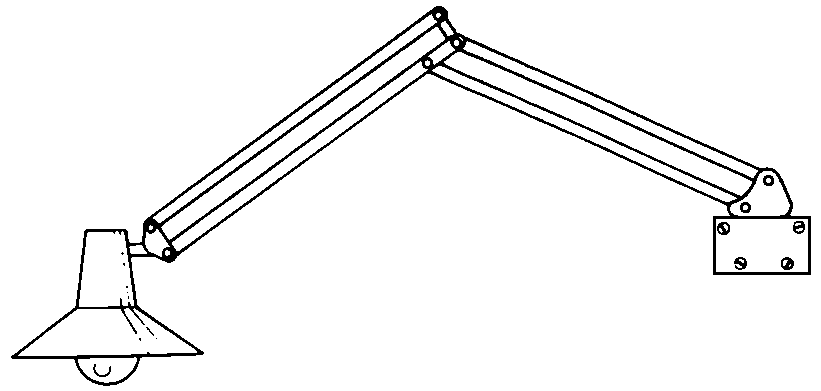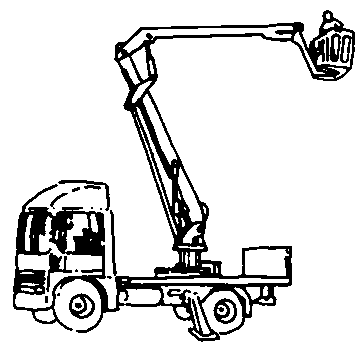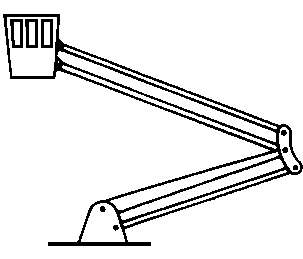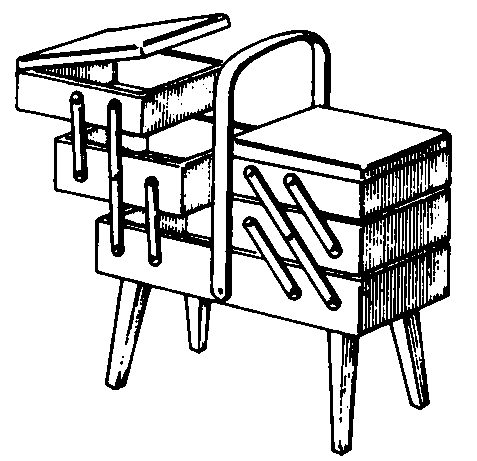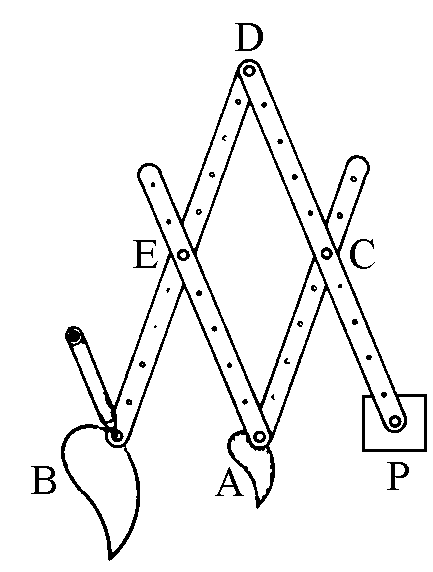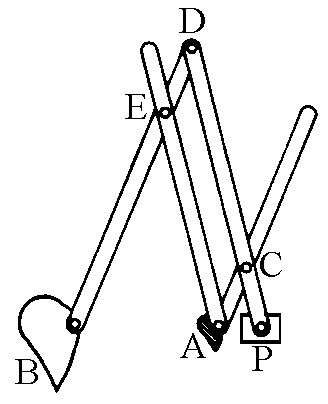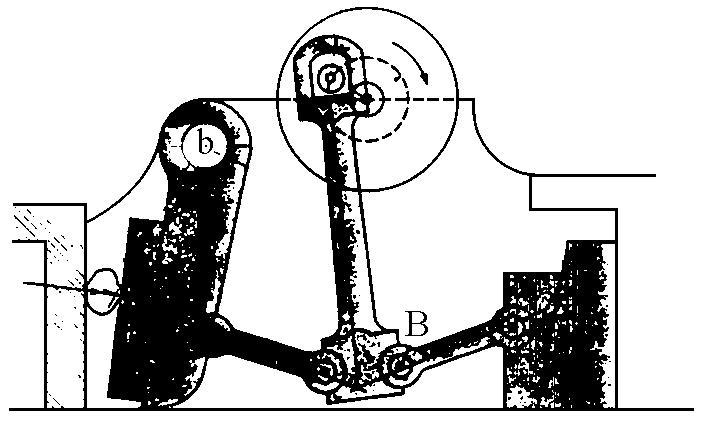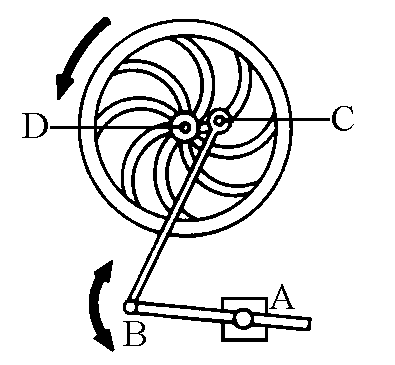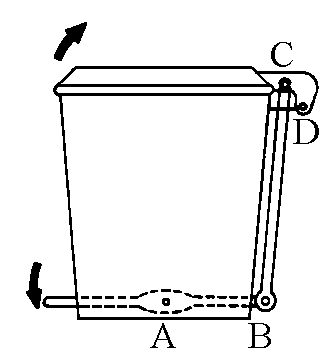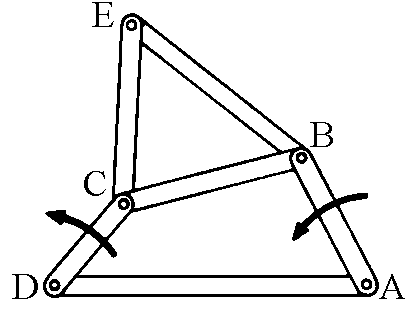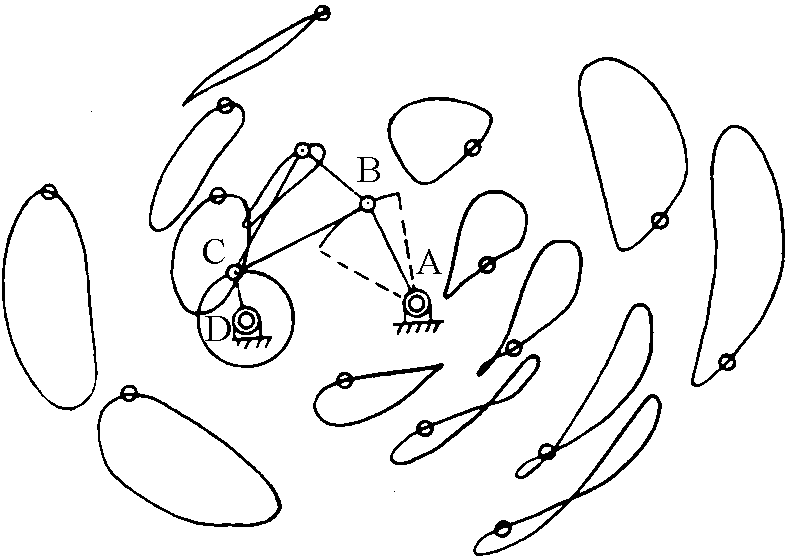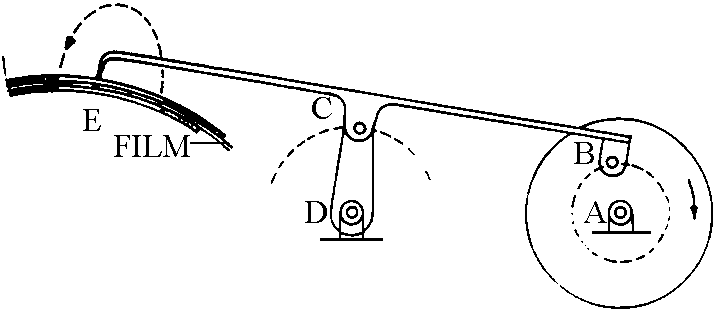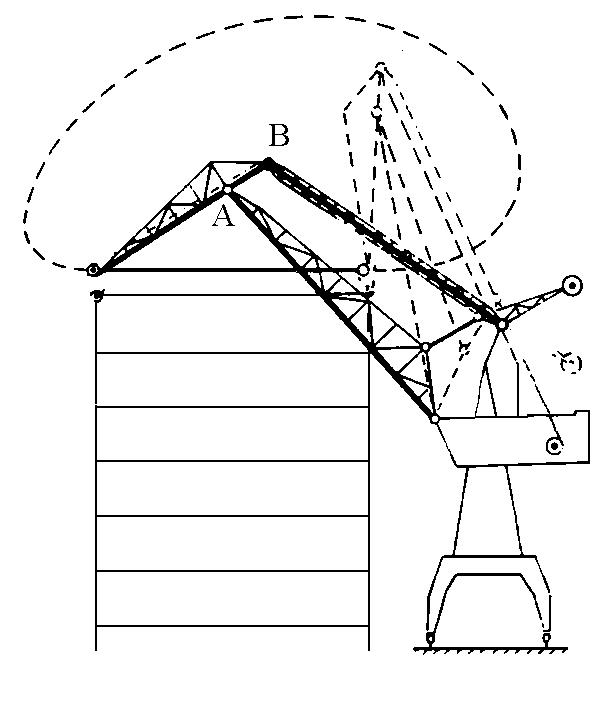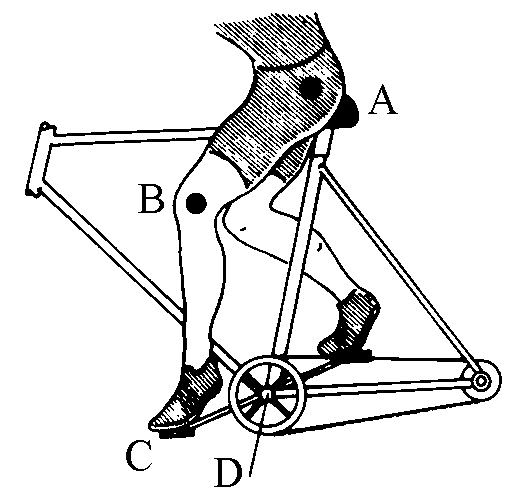
As we have seen, simple hinged rod
mechanisms can solve both theoretical and practical problems. The simplest of these mechanisms is
the articulated quadrilateral. If you
consider the ABCD quadrilateral with a fixed side AD, it
is clear that the position of one of the rods determines
that of the remaining ones. This mechanism has only
one degree of freedom.
If, in the version shown in the figure on side l, one
rotates the CD rod counter-clockwise, the AB rod also
begins to rotate counter-clockwise. However, at a certain
point the latter inverts its direction of motion,
although CD continues its counter-clockwise motion. It is
not easy to imagine the movement of this simple
mechanism - it's be best to make a simple model with
cardboard strips or Meccano rods or some such, or to
look at the figure on the side. The leg of the cyclist
and the arm of the pedal form an articulated
quadrilateral very similar to this one.
The difficulty in predicting the type of movement depends also on the fact that, by varying the rods' length ratio, the system may function in a very different way. This is the fascinating, interesting and useful nature of the articulated quadrilateral.
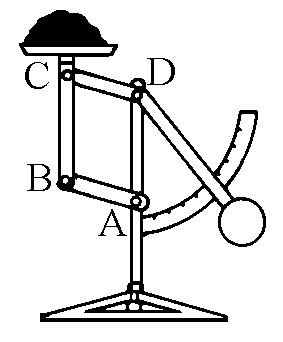
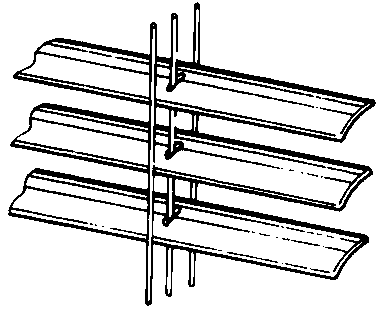
If
In each case in which it is necessary that some parts
keep a prefixed position on a plane, the articulate
parallelogram offers the optimal solution. For example,
in the case of the machinery used to lift personnel to
check street lighting, it is necessary to ensure that the
cabin stay horizontal, no matter the height from the
ground. Please note that some of the described examples
use two coupled parallelograms - in this way one may
obtain movements in two directions (with two degrees of
freedom) but the parallel nature of movement remains
guaranteed.
